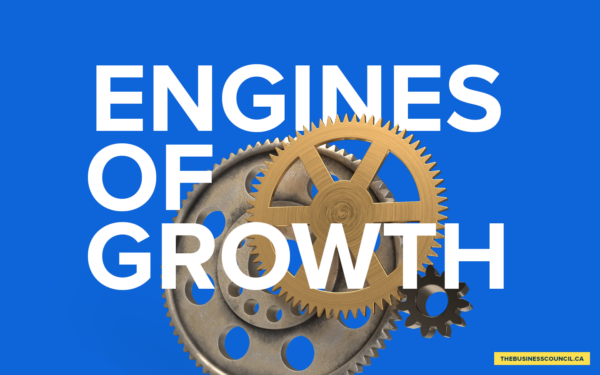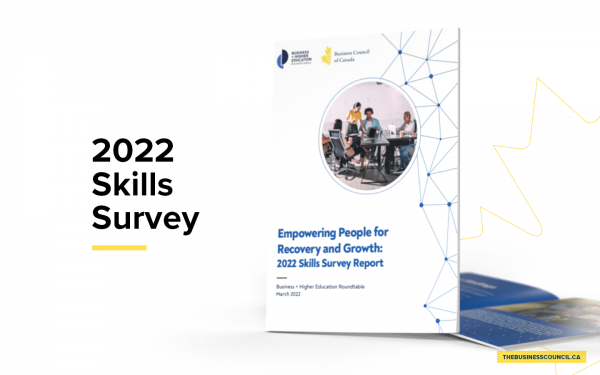Career ready: towards a national strategy for the mobilization of Canadian potential
Executive Summary
Jobs paranoia is widespread in Canada. Elementary pupils are coming home after receiving the “job talk” from their teachers, typically emphasizing the importance of getting good grades so they can get into a high-quality university – rarely a college, a polytechnic institute or an apprenticeship program. Parents worry about enrolling their children in the “right” schools and academic programs. There is growing concern about the transition from school to work. News media, television programs and movies offer tales of underemployed university and college graduates, intense competition for decent jobs and chronic youth unemployment.
Employers have their own concerns. Business leaders have called for action to ensure Canada produces more workers with skills in high demand. Employers are searching, too, for individuals who are willing to relocate where they are needed, and in many cases are looking outside Canada to find workers, particularly in the skilled trades. Postsecondary institutions are struggling to keep up with the demand for their programs – even though many recent graduates are having a hard time finding secure, well-paid employment.
To date, the public policy response to Canada’s workforce challenges has been less than coherent. Provincial governments continue attempts to boost university enrollment, a policy driven more by a desire to placate parents than a logical response to the needs of the workforce. The federal government has promoted a Canada Job Grant program, but its introduction ran afoul of provincial jurisdictions, highlighting the difficulties of creating a national response in a federal state.
Canada’s workforce challenges are real and solutions remain elusive. Major transitions are underway, driven by the introduction of new technologies, international competition, demographic changes, and regional economic realities. The economic patterns of the post-Second World War era have not prepared Canadians for this new global, technological era. Starting in the 1950s, Canadian prosperity rested substantially on the nation’s hundreds of thousands of comparatively low-skilled jobs (many of them unionized), which provided workers with good wages and benefits. In sectors such as forestry, construction, automobile assembly and other areas of manufacturing, thousands of these jobs have disappeared over the past 30 years. Most of the newly created positions – in digital technologies, creative content, finance, advanced manufacturing and resource extraction – require different skillsets than were necessary in decades past. These changes have resulted in significant levels of regional unemployment, growing underemployment and workers stuck in contingent/temporary jobs, even while many companies report being unable to find the skilled and specialized employees they need.
Canada’s challenges are exacerbated by what appear to be changing national attitudes toward work. While the fairness of this description remains to be tested, particularly as it relates to many immigrants, the current generation of young people is defined by a sense of entitlement and an expectation that their lives will somehow unfold along a predetermined and positive trajectory. Families have, to a surprising degree, turned dreams for their children’s future away from blue-collar work, despite the higher level of technological proficiency required for such jobs and evidence of high wages and strong demand for workers in many of the skilled trades. The perception remains widespread among Canadian parents and youth that a university education is the key to success. This view of the economy misleadingly mixes the reality of solid opportunities for graduates of professional programs with the less impressive prospects facing many general liberal arts and science students, never mind the more daunting challenges facing those who try university only to drop out before earning a degree. Parents, it seems, do not particularly want their children to be plumbers or radiation therapists, and continue to be optimistic – overly so – about the economic prospects for university graduates in general.
At present, the development of the Canadian workforce through post-secondary education has evolved in a manner that is not sensitive to the job market. It is driven by parental, student and governmental priorities with relatively little input or direction from the Canadian business community. Students decide, typically between the ages of 17 and 19, how they wish to enter the workforce, in large numbers by attending a post-secondary institution or other training program. Leaving the development of the Canadian workforce in the hands of young adults, many of whom have a fixed and narrow understanding of the Canadian workforce, is risky, especially when they are insulated from the realities of the modern economy. A lack of systematic and readily acceptable information about employment outcomes for graduates of college, polytechnic and university programs means young adults are making crucial decisions about their futures based largely on anecdote and parental/family experience. This, of course, is in keeping with the general approach of governments in Canada, which focuses on providing Canadians with the services they want, in this case education and training, rather than the preparation they and the country need.
Given the high individual and national economic stakes, the case for change in Canada’s approach to education and skills is compelling. Governments, educational institutions, employers and students need more information and better tools to make decisions that serve their personal and professional interests. The availability of such tools would benefit young Canadians as well as businesses and the economy, helping preserve Canada’s place in an increasingly skills-oriented and competitive world.
Moving Canada’s workforce forward requires a more deliberate systemic approach, including elements of the following ideas:
- Improved career information and advice. Students and parents should have timely information from new graduates about education, career experiences and income. Such vital data supports informed decision-making, places greater onus on institutions to prepare students for work, and rewards programs that yield better real-world outcomes.
- Re-prioritization of applied learning for many students. Polytechnics have proved that applied learning works. The polytechnic system should be expanded and work experience, including apprenticeships and co-operative education, should be integrated as early as high school.
- Promote enrolment in high-demand, career-ready programs. Governments and employers should make financial incentives available to attract top students into areas of identified demand and provide them with assured employment upon graduation.
- Establish competency frameworks for a range of sectors and occupations. Educators and employers both have limited faith that prerequisites or credentials genuinely equate to certain skills or competencies. Introducing competency frameworks, including standard employment-readiness assessments, would allow employers to more accurately gauge the skill levels of job applicants.
- Encourage entrepreneurship. Canadian educators must embrace the need to develop the next generation of economic builders, innovators and business owners. Innovative, risk-taking young people must be encouraged, taught applied skills and provided with the resources and support they need to pursue their ambitions.
Canada is home to an impressive number of colleges, polytechnics and universities that serve this country well within their current mandates. However, we need to be more effective in matching, skills, training and education with workforce needs across the country. Our resource companies, particularly in the energy sector, put Canada in a strong position, generating a steady stream of jobs and government revenues. But we can either rest on our laurels or use this resource wealth strategically to promote a national culture of entrepreneurship, skills and technology. Right now we are on a riskaverse course, one that ignores forecasts of disruptive transformation in the job market. If the future brings a two-tier workforce – one in which a small number of highly skilled specialists earn world-class incomes, while everyone else struggles to get by on modest wages – social and political unrest could follow. This, unfortunately, is precisely where we are headed.
Building a technology-enabled economy and workforce that provides real opportunity for tomorrow’s young adults requires a level of leadership and innovation that Canadians rarely demonstrate outside of wartime. We owe it to ourselves to scrutinize the status quo, and we owe it to our youth to initiate the institutional and cultural changes that will simultaneously enable their fulfillment and secure Canada’s ongoing prosperity and success.

Shortcomings in Canada’s Approach to Workforce Development
Canada’s workforce is not currently in crisis, but there are several important points of weakness and vulnerability in our country’s current approaches to education, training, skills development and employment. We lack a market-driven approach to workforce development that matches education, training and the availability of workers to the needs of the economy. Worse, there is a serious shortage of clear information about job and career opportunities, employers’ skill needs, and medium- and long-term employment prospects. This makes it vastly more difficult for young adults, parents, educational institutions, companies and governments to make intelligent, informed decisions. Weaknesses in Canada’s approach to workforce development can be discussed from several perspectives, each of which highlights important problems in the evolution of work, recruitment, education and training in Canada.
Weak investment by Canadian business
Canada’s business community overall does not play a proactive role in the development of the Canadian workforce and does not match its counterparts in competitor nations in investments in workforce training. Larger Canadian companies do tend to invest heavily in the career development of their professional (technical and management stream) employees. But with some important exceptions, firms tend to invest less in the training of their lower management and semi-skilled workers. Given the over-supply of people with generic qualifications – such as the recent surge in business graduates and the large number of young people with bachelor’s degrees in arts and science – the lack of any real wage premium for non-specialized workers, even with degrees, is not surprising. Meanwhile, the private sector and Canadians in general tend to believe that it is ultimately government’s responsibility to produce a trained workforce.
There are some exceptions. Firms in highly specialized fields invest heavily in college, polytech and university-level training and education. There are commercial reasons in addition to inherent academic reasons why engineering and business schools attract disproportionate financial support from industry. Similarly, companies in the resource sector that seek to work closely with Indigenous communities have established extensive training, apprenticeships and professional development initiatives to boost local employment.
That said, for the most part Canadian companies take a passive approach to employee development, especially when compared to Germanic, Scandinavian and East Asian companies. Firms are often reluctant to invest in specialized education because they fear that employees who acquire new skills at the company’s expense will leave and join another firm. With important exceptions, Canadian firms therefore look to public institutions and government programs to prepare the workforce for expanding sectors and to take care of employees displaced by downturns in the economy.
It is crucial that we change our assumptions about the role business can and should play in upgrading the skills of Canada’s workforce. Developments in the United States, including the publication of Robert Schwartz’s important Pathways to Prosperity, call for business engagement in educational reform and increasingly innovative collaborations among business, government and secondary schools.
An education system that is stuck in the past
Institutions – including government agencies, colleges, polytechnics and universities – are tradition-bound entities. Tradition is, in fact, their strength. In times of economic churn, however, tradition and inflexibility become barriers to innovation. The “bums in chairs” funding approach embraced by governments has encouraged colleges, polytechnics and universities to adopt expansive enrollment strategies, leading to increased class sizes in most institutions and often reducing educational quality in the process. Universities and university faculty argue strenuously in favour of greater access to higher education, without sufficient regard for the ability of their students to find suitable jobs after graduation. Funding for post-secondary institutions is based on the number of students rather than the career experiences of graduates. Many institutions – colleges and polytechnics foremost among them – have recognized the importance of responding to labour market demand. However, educators should work harder to ensure that students have the information they need to make sound decisions.
Inflexibility is also an issue. Despite the fact that students often change majors or entire courses of study, the post-secondary system is generally inflexible and hard to navigate. Artificial and cultural barriers interfere with student mobility between institutions and make it more difficult for students to pursue employer-sponsored co-op terms or apprenticeships. In Ontario, students encounter difficulties moving from colleges and polytechnics to universities – and even from one university to another. British Columbia, in contrast, has a more integrated system, particularly as it affects transfers between local colleges, smaller universities and the larger institutions. But mobility between provinces is poorly developed, with no national effort being made to match the availability of post-secondary spaces in, say, Atlantic Canada with the large number of students from the Toronto area who want to attend a college or university. Tensions among the various types of institutions, and concerns about university autonomy, make collaboration even more time-consuming and difficult.
Over-emphasis on university education
Canada currently has a demand-driven approach to higher education. With the exception of externally controlled and accredited professional programs, the system is expected to accommodate virtually any young person who wishes to study at a postsecondary institution. Every marginally talented student in the country can get into a college and most can get into a university, even though many are ill-suited or unprepared for the experience. Canada needs to shift away from this open-access approach – based on the idea that everyone “deserves” a degree, or at least the chance to try to earn one – to one that is based on achievement, motivation and compatibility with national needs.
It is often suggested that post-secondary institutions, overseen by government departments, should manage the flow of students into and out of programs. The reality, particularly for universities with their longer program cycles (four or more years), is that it is extremely difficult to anticipate downstream market demand for employees. Governments have a poor track record when it comes to picking “winners” in the economy and have often missed targets, even in areas such as nursing and teaching in which they control both the supply and demand for labour. Hence we should be highly skeptical about suggestions that system planning will ensure a better match between graduates and workplace needs. Rather than trying to anticipate precise employment trends, governments and institutions should focus on teaching core skills and competencies that prepare graduates for a wide range of possible career options.
Canada could dramatically improve the quality of university education by cutting enrolment as much as 25 to 30 per cent while maintaining budgets at roughly the same level. The young people who were not accepted would for the most part be those who are, in any event, unlikely to graduate. This selective approach would likely produce more graduates, or at least no fewer, who are better prepared for the world of work. Unfortunately, it will not happen in a system that caters to student demands rather than valuing real achievement and high standards.
The absence of a national plan
The role of the Government of Canada in workplace development is uncertain and poorly defined, as was demonstrated by the 2013-2014 contretemps over the proposed Canada Job Grant program. The provinces and territories are responsible for primary and secondary education as well as most post-secondary education, training and retraining. One advantage of this approach is that provincial and territorial governments able to respond to localized economic shifts. However, the absence of a national approach to employment and workforce preparation puts Canada at a significant disadvantage relative to other leading industrial nations. Given that the problem is national in scale, there is a clear need for active federal engagement.
Countries around the world understand the difficulties inherent in matching workers, skills and rapidly changing 21st century labour needs. In Canada, the challenge is magnified by the complexities of our federal system and the need to balance competing aspirations, preferences and jurisdictions. Canada does not have a coherent or organized post-secondary system in any province, let alone in the country at large. At a time when considered, strategically planned workforce development could be helpful, Canada is hamstrung by jurisdictional differences and political wrangling.
Insufficient worker mobility
Canada is an overwhelmingly urban nation, with our largest cities home to well over half of the population. Most rural and smaller communities have experienced economic decline in recent decades, and current trends are likely to reinforce the trajectory. Young people who relocate to cities and larger towns for college and university are often reluctant to return home. Most new Canadians gravitate to cities and to ethnic enclaves within those cities. Immigrants who settle initially in smaller communities and remote areas – for example, the unskilled workers who until recently were being recruited in large numbers to Fort McMurray and other northern booms towns – often gravitate to larger centres within a few years.
Canadians are a curious mix of place-bound and highly mobile people. The hundreds of thousands of new Canadians who have arrived in recent years have in many cases travelled great distances and experienced significant cultural changes. The steady migration of people from the East Coast to the Western provinces is further evidence that this is a country the move. Still, many Canadians refuse to view relocation as a solution to employment challenges. For a variety of reasons, most of us seek work close to home. For 40 or more years, the Government of Canada and provincial authorities supported this aspiration, funding make-work, job creation, regional development programs and other schemes designed to prepare workers for local opportunities that often proved elusive.
These and similar government interventions encouraged unemployed and underemployed Canadians to remain where they were rather than taking their skills to locations where labour was needed. But as well-paid jobs became increasingly concentrated in a small number of locations – mainly major cities and resource districts – the employment challenges facing residents of smaller and rural centres continued to grow. Governments spent increasing sums of money supporting people who chose to remain where their skills were not needed.
Canada’s workforce remains subject to artificial constraints. When people in an area of low employment wrestle with the cost of moving in search of work, they consider the normal costs of relocation and family disruption but also factor in the availability of wage replacement benefits or other support programs. Local wage subsidies serve as a disincentive to mobility, interfering with the natural operations of the labour market. Some jurisdictions have tried to address this problem by cutting benefits, but support for place-bound employment and training programs remains strong so it is unlikely that such programs will disappear entirely.
Misaligned parental and youth expectations
Responsibility for Canada’s labour market challenges does not only rest with business, government and post-secondary institutions. There may be a more fundamental disconnect: the mismatch between workforce realities on one hand and parental and youth expectations on the other. Surveys show that the vast majority of Canadian parents want and expect their children to obtain a university education. They also show that young adults believe university education is the most assured pathway to prosperity and career opportunities. Colleges and polytechnics suffer by comparison: not enough Canadian teenagers aspire to these more practical options.
In the tradition of Garrison Keillor’s fictional town Lake Wobegon, where “all the children are above average”, young Canadians have been conditioned to expect better-thanaverage outcomes in life, especially when it comes to careers and income. The current national debate about skills and workforce preparedness has probably encouraged many young people to re-evaluate their prospects, but the cacophony of voices offering advice on careers, training, education and future possibilities is confusing. There is no simple and assured path to career success in today’s economy. Hence, young adults and their families tend to default to the traditional view that a university degree is the best avenue to prosperity.
Young Canadians typically expect a great deal because – with the exception of many Aboriginal people, those living in severe poverty, and significant numbers of refugees and new Canadians – they experience a relatively easy path to adulthood. The pressures they encounter while growing up are modest by historical standards. The education system is less demanding and more accommodating than in the previous decades. Society as a whole is permissive. Parents are often eager to please their children, and it is not without some justification that the current cohort of young people is referred to as the “entitlement generation.” Elementary and high schools emphasize self-esteem despite the dearth of research showing its relevance to academic or career success, let alone personal happiness.
The mantra of our time appears to be, “You can be anything you want to be” – a demonstrably false statement. In reality, many things constrain people from achieving their personal goals, among them lack of talent, opportunity, work ethic and luck. Just as many of the best books are never published, so are many potentially wonderful doctors never trained, fantastic entrepreneurs never funded, and talented civil servants never hired. One’s life does unfold logically toward a predetermined career, and indeed most young people revise their career goals in the course of their studies. One person dreams of becoming a doctor before developing an interest in architecture, while another heads to university to become a teacher but winds up stocking shelves for a retail chain.
Canada’s youth are encountering a clash of expectations. Large numbers of young people aspire to stable and secure jobs. The federal public service now tops the list of career preferences. Exciting and creative positions in the private sector are also attractive: for example, Apple and Google follow close behind in Canadian aspirations, even though neither has a substantial employment presence in Canada. Perceived dependable careers such as teaching, law and medicine remain popular, even in the face of declining employment prospects. Few students leave high school saying, “I’d like to drive a transport truck in northern Saskatchewan,” or “I really want to be a telemarketer for a high-pressure investment company,” or “My dream is to be a waiter in a mid-range restaurant.” The gap between expectations and outcomes will probably grow even wider for many young people. Those who possess that rare combination of drive, curiosity and intelligence – particularly in combination with scientific and technological prowess – will likely enjoy remarkable career opportunities. The future is bleaker for those with motivational challenges and limited skills.
Put simply, Canadian families need to revisit their expectations for young adults and be more realistic about their prospects in an evolving and increasingly competitive labour market.

Solutions to Canada’s Job Challenges
There are many steps we could take to improve the quality of Canada’s workforce and the career prospects of young Canadians. Whatever is done at the level of educational institutions and employers, however, must be matched by a more focused approach to career planning on the part of families, young adults and current members of the workforce. Indeed, we face our greatest challenges at the level of the individual and his or her family. Government policies and our system of public education are geared to enabling young people to follow their dreams, passions and preferences. The alternate approach – adopted in countries as varied as India, Estonia and Finland – balances personal choices with national and economic needs. While it is unlikely that a state-led system will ever emerge in Canada, there is merit in exploring a more strategic and organized approach.
A more systematic approach
As a starting point, Canada needs to change its thinking about post-secondary education. In recent years, colleges and polytechnics have shifted somewhat from a purely student-driven approach to one that takes account of employer needs and business input. Universities, outside of selective market-sensitive professional programs, are a different case. Many university faculty and administrators reject the notion that they have a duty to prepare students for the workforce. So long as the economy was capable of absorbing large numbers of generalists, allowing universities to claim a huge income premium for their graduates, there was little or no need for universities to re-appraise their own program priorities.
Canadian society will always tolerate and encourage considerable freedom of choice, but there can be too much of a good thing. We are there now. Public funds and corporate support should be targeted more systematically to meeting the identified workforce needs of the Canadian economy. Individuals who are willing to pay for education and training in fields of lesser priority should have the opportunity to do so, but with little or no government support. As Canada’s labour needs continue to evolve, our country is going to have to shift away from allowing 17- and 18-year-olds to define the shape of skills training and education by their enrollment choices. Instead, we will need to adopt a broader approach that takes into account personal aspirations, employer needs and much greater information about career realities. Such an approach will require all participants – from young adults and parents to governments, institutions and businesses – to make clear and solid decisions. Post-secondary educators will have to shift from wooing students to attend specific institutions – an enterprise that now costs hundreds of millions of dollars a year in advertising – to drawing the right young adults into programs that seek to match ability with identified workforce demand.
Canada has a long way to go in this regard, and it had better get more serious about the challenge. In the next one to five years, the country needs to adopt elements of the following ideas:
- Better career advice and information: At present, Canada’s career-advisory systems and access to reliable career information are hit-and-miss. Some students receive superb advice and assistance, while others fend for themselves. This is serious business, yet for the most part we treat it casually. Canada needs to do better.
Most young adults currently make choices based on inadequate information. We need to develop much more effective ways of providing them with detailed information from governments and employers about career experiences and labour force demand, projecting three to five years into the future. This information has to be relayed to young adults in an accessible and meaningful way.
Colleges, polytechnics and universities should be required to collect and make available online up-to-date information on graduates’ career and income experiences. Such data, provided at the level of the program or degree, would allow students and their parents to make more informed choices between programs of study. It would, in all likelihood, place greater pressure on institutions to devote more effort to preparing students for their eventual move into the workplace, and would reward institutions and programs with better outcomes. Such an approach would likely steer more students toward polytechnics and cooperative education programs. Fewer students would be encouraged to pursue generalist university degrees.
Renewed emphasis on applied learning: Canada’s superb and growing polytechnics system gets it. Its administrators and educators work closely with employers, focus on career-ready programs, and adapt quickly to new technologies and changing workplace requirements. Canada’s polytechnics are also among the most innovative educational institutions in the country. Practical and applied programs and research deserve to be elevated in status and resources to the point where they are seen as being every bit as important to the country’s future as our universities.
Moreover, we need to introduce students earlier – preferably in high school – to the connection between learning and employment. There is abundant evidence that young people who are introduced to the world of work early in their lives develop the skills, reliability and work ethic that are the foundations of career success. Greater participation from business in high school programs, from co-op placements and job shadowing to purposeful summer employment, can make a major difference in the personal development of young Canadians. Here is the rub, however. Canadian high schools are often “business-free” environments, as intense debates about in-school advertising and the commercialization of schools demonstrate most effectively. If one of the goals of the public school system is to prepare students for the rest of their lives, they would do well to invite the business community to play a part in the school experience.
Canada’s apprenticeship system – or systems, since federalism dictates we have 13 of them – effectively connects students to businesses and on-the-job training, but it is in need of major expansion and improvement. Greater integration of apprenticeship programs with high schools, already underway in some quarters, and greater encouragement of technically gifted young Canadians, are urgently required. Apprenticeships must emerge as first choices for more high school graduates.
To foster other applied skills – from accounting to graphic design – governments and educators should heavily promote cooperative education programs, which combine academic study with part-time work experience. Co-op education could also be refocused to combine full-time employment with part-time academic study, further emphasizing work-based skills development. Such a change would have the added benefit of requiring companies to invest more in skills development and students they believe have a bright future.
- Promote enrolment in high-demand, career-ready programs: Provincial and territorial governments have invested heavily in expanding access to post-secondary education, but in the process they have been overly respectful of institutional autonomy. As a result, the growth of the student population has been out of step with workforce needs, producing graduates who have struggled to find stable jobs and careers. Provincial governments, working with institutions and employers, need to be more focused in their support for education and training, directing resources to fields where there is demand. This approach tends to work well at the college and poly-tech level and needs to be adopted by universities.
While governments are limited in their ability to forecast workforce requirements, some measure of government-business cooperation can help to improve training and education outcomes. With the caveat that the focus has to be on downstream rather than immediate needs, government and business should provide financial incentives to attract qualified students to fields where it is clear they will be needed. Scholarships, guaranteed summer jobs, contingent loans and other forms of support could help draw young adults into education and training programs that are important for future economic growth. A key incentive would be assured employment upon graduation.
- Establish competency frameworks for a range of sectors and occupations: Canada’s education system may not be performing as well as it should, but our topranked schools are among the best in the world. The transition from education to work, however, is often less than ideal, in part because educators and employers lack confidence in the credentials earned by incoming students or job applicants. For example, post-secondary educators often complain about the basic writing, mathematical and study skills of high school graduates. Employers are likewise often unimpressed with the level of non-cognitive (“soft”) skills they see in college, polytech and university graduates. Too often, employers discover that graduates’ credentials do not match workplace needs. Introducing competency frameworks, including standard employment-readiness assessments, would allow employers to more accurately gauge the skill levels of job applicants.
Competency-based evaluation processes are therefore needed. Whether the evaluation is performed at the level of the program, institution or employer (as some large firms currently do), a systematic, comparative and ideally nationwide system of competency testing would be revolutionary in impact. Of course, the pushback from educational institutions would likely be considerable as well.
Encourage entrepreneurship: While Canada has a skills deficit, it has an even greater entrepreneurial deficit. Our country does not support, promote or cultivate entrepreneurs to the extent that it should. To that end, Canada needs to recognize and celebrate undertakings such the truly impressive Shad Valley program for high school students, the University of Toronto’s country-wide entrepreneurship initiative and the University of Waterloo’s Velocity initiative. We need more creative and risktaking young Canadians, preferably people whose energy and resolve will remain connected to Canada.
Preparing Canadians for 21st century realities
Many Canadians cling to an outdated image of our country’s place in the global economy and workforce. They have fond memories of the 1980s and 1990s, when semi-skilled workers in Central Canada and British Columbia could often find well-paid, long-term, union-based employment. But the world has changed, and with it the very nature of work and career opportunities. Canada and Canadians need to shift accordingly.
No one organization or set of institutions can modernize and strengthen Canada’s approach to workforce development. If future generations are to be truly career-ready in an age in which when economic realities are shifting quickly, Canada must address its workforce and economic challenges in a multifaceted manner.
Significant improvements are required at every level of Canada’s education and skills development system:
Canadian business investment and leadership: In the absence of leadership from the Government of Canada, or the various levels of government working cooperatively on a national strategy, it is incumbent on the business community to articulate a vision for the nation’s medium- and long-term workforce needs and opportunities.
Canadian businesses of all sizes – large corporations and small to medium-sized enterprises – should become more engaged in the training and development of talented young people. This could include:
- Engagement with college and university programming advisory committees;
- Work study and cooperative education placements;
- Work-learn arrangements (the reverse of cooperative education, with paid employment being the foundation of a part-time education and training program)
- In-house training and upgrading programs, ideally on a sectoral basis to secure economies of scale;
- Local skills development, patterned on current experience with Aboriginal programing;
- National business engagement in forecasting employment needs, promoting educational alternatives, and signaling downstream possibilities for students emerging from high school.
K-12 education improvements: Canada’s public education system has not kept up with rising global standards in recent years, particularly in the areas of math and science (although the system is doing better than some believe). The current emphasis on self-esteem and low-pressure teaching – which thousands of Canadian families explicitly reject by sending their children to private schools or after-school programs such Sylvan Learning Centres or Kumon – is going to have to give way to a greater role for basic education and more competitive outcomes.
Rethinking the role of post-secondary institutions: The combination of provincial responsibility for post-secondary education, the absence of federal-provincial coordination and the institutional autonomy of universities makes a concerted, career-oriented approach to advanced education, skills development and training nearly impossible. In coming years, inconsistent employment outcomes will likely result in increased pressure from students, alumni, business and government for more career-focused education. In the interim, colleges and polytechnics will and should attract increasing attention and more students. If they follow the model imposed by governments on universities, they will expand too quickly and will saturate specialized employment markets. If, on the other hand, they maintain close ties with the business community and governments, and seek a balance between student demand and workforce needs, Canada will be well served. It is useful to note that academic, training and professional programs with close ties to external accreditation and professional organizations are, in general, most successful in helping graduates to become career-ready and ensuring a smooth transition from study to work.
Federal, provincial and territorial governments: The debate over the Canada Job Grant program and the effective absence of a national post-secondary education strategy speak to the need for urgent attention to the role of government in the sector. Jurisdictional differences have historically been put aside during times of crisis. Right now, there is no real employment or workforce crisis, although these could well be coming shortly. What is needed is a truly open review of Canadian educational and training capabilities and a refocusing of colleges, polytechnics and universities into appropriate roles. In particular, universities should be encouraged to emphasize advanced academic and professional preparation, accepting smaller enrollments in return for stable budgets and a recommitment to academic priorities.
Worker mobility and flexibility: Every year thousands of Canadian workers experience major changes in their lifestyles and family arrangements in order to find well-paying jobs. Many others, however, are unwilling to move or shift fields of employment. Mobility and flexibility in place and nature of work are essential and should be encouraged.
Family and youth responsibilities: Families must rethink their approach to postsecondary training and career planning. Parents need to be far more honest with themselves about their children’s abilities and interests. Enrolling a student in an academic program for he or she is unsuited is irresponsible and unfair both to the young person and to the educational institution. Young people need to think seriously about their goals, their willingness to work, and their career and income expectations. Some families do get it. Consider the number of new Canadians enrolled in highdemand professional programs and the family cultures that support them in their educational and career endeavours. Those who understand the competitive and nature of the world of work are much better prepared for what they will encounter when they enter the labour force.
Young people need to avoid joining “the swarm” – the huge numbers of recent high school graduates who head off, often with little forethought, to a local college or university each September simply because so many of their peers are doing the same thing. Families need, more than anything, to become better informed about the rapidly changing national and international economy. Jobs will not necessarily be located close to home – so mobility matters. The expanding digital economy is creating new opportunities but closing old doors, privileging entrepreneurship to a degree that many Canadian families may find unnerving. What worked for their parents and grandparents, to be blunt, is not likely to work for today’s youth.
It bears repeating that young adults and families should lessen their preoccupation with a university education and be far more open to the opportunities provided by colleges and polytechnic institutes. They also need to make a concerted effort to align their abilities and interests with the country’s workforce needs. Too little of this planning is taking place, even though the information is available for those who make even a small effort to find it.
In most sectors of the economy, we use the price mechanism to achieve a balance between supply and demand. Universities increasingly charge higher tuition fees for certain professional and specialized technical programs, but in much of Canada’s post-secondary education system there is an absence of meaningful price signals. The prevailing belief that post-secondary education is a “right”, and the pressure on governments and institutions to constrain tuition fees, serve to distort college and university enrollment and discourage planning.

Conclusion: reinventing skills development
Canada boasts an impressive number of colleges, polytechnics and universities that serve the country given their mandates and current expectations. However, Canada needs to become more effective in matching skills, training and education with workforce requirements. We need to improve the interface between post-secondary institutions and the broader economy. Young adults need a bracing reality-check about the job and career opportunities that await them, and parents need to be much more realistic about their children’s abilities and skills. Some university programs, and many colleges and polytechnics, are doing an excellent job of preparing their students for the future, but others are not – and partly as a consequence, underemployment has become a serious challenge for young Canadians.
Right now, complacency and reluctance to change characterize Canada’s approach to education and training. As a country, we are passively allowing the future to unfold on and around us. But if forecasts of the coming transformation of the labour market are only half accurate – and they could easily be understated, if the experiences of the Industrial Revolution are anything to go by – the youth of today and tomorrow will pay a heavy price for national inactivity.
Canada’s economy generates an admirable standard of living for its citizens, and our country deserves its place among the world’s most advanced nations. The challenges we face in education and training are, for now, irritations and frustrations more than catastrophes. People who find themselves underemployed after years of advanced study naturally feel disappointed and discouraged, but most can still earn a reasonable living. Dashed dreams and unrealized expectations, more than deep financial and personal hardship, define the lives of large numbers of contemporary young Canadians. More serious challenges – such as the risk of widespread dislocation and chronic unemployment as technological progress renders many of today’s jobs obsolete – may lie ahead. What is clear is that Canada has yet to show the foresight and determination to address our collective challenges, moving beyond the narrow self-interests of governments, institutions and individual citizens.
We owe it to ourselves to question outdated ways of thinking and deeply ingrained attitudes that constrain our capacity to adapt to an evolving labour market. And we owe it to our youth to move forward with institutional reforms and cultural changes that will help to secure their, and Canada’s, future prosperity and success.












